We set sail to discover the science of sustainable shipping in this week's Naked Scientists. We visit an enormous wave tank to find out how the sea swell can impact on damaged ships, and look at the problems caused by sulphur-rich shipping fuel. Plus, we hoist the SkySail, an enormous parafoil kite that can be deployed from the deck of a ship to cut fuel consumption by up to 60%. In the news we hear how happiness can be found here and now, why children tire so quickly when walking and how Earth became oxygenated 400,000 years earlier than we thought. Also, we investigate the elegant physics of a lapping cat!
In this episode

01:46 - Happiness is Here and Now
Happiness is Here and Now
When are you at your happiest? Research published this week shows that we are most happy when we're concentrating on the job at hand, rather than allowing our minds to wander. But, oddly, people seem to spend almost half of their waking hours thinking about something other than what they're currently doing.
 Matthew Killingsworth and Daniel Gilbert, from Harvard University, developed a free application for smartphone users that contacted it's users at random intervals to ascertain their happiness, what they were doing and, importantly, what they were thinking about. They asked if they were thinking about what they were currently doing or, if not, was it something pleasant, neutral or unpleasant.
Matthew Killingsworth and Daniel Gilbert, from Harvard University, developed a free application for smartphone users that contacted it's users at random intervals to ascertain their happiness, what they were doing and, importantly, what they were thinking about. They asked if they were thinking about what they were currently doing or, if not, was it something pleasant, neutral or unpleasant.
It's thought that our ability to contemplate events in the past, as well as possible future events, is a vital part of the human condition. It helps us to learn, reason and make plans, but this study, published in the journal Science this week, set out to see how it affects our happiness.
Reports of mind-wandering, or "stimulus independent thought" were strikingly common in their results. For 21 of the 22 different categories of activity, people reported that their minds were wandering no less than 30% of the time. The only activity where people didn't report this much mind wandering was when making love. Contrary to what you might expect, the activity in hand didn't actually affect how pleasant the daydreaming was.
But how does this relate to happiness? By performing a multilevel regression analysis, which is a statistical analysis that can show causal relationships in sets of data, the researchers were able to show that people were less happy when allowing their minds to wander. In fact, even thinking pleasant thoughts was no more likely to make you happy than staying "in the moment".
So it seems that there may be some truth in the philosophical and religious teachings that tell us happiness is attained by "concentrating on the moment" but, still, a wandering mind is a useful one. The authors argue that "the ability to think about what is not happening is a cognitive achievement that comes at an emotional cost".
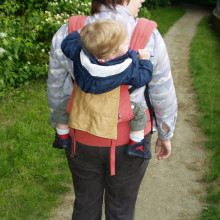
04:48 - Why kids get tired just walking around
Why kids get tired just walking around
As any parents, aunties or uncles know full well, kids get much more tired out simply walking around than adults do, and now scientists have taken a step closer to understanding why this is. It's not just that they run up and down more, or that we get more efficient at walking as we grow taller, but in fact it's all about having longer legs.
Publishing in the Journal of Experimental Biology, Peter Weyand from Southern Methodist University in the US led a team of researchers who investigated the metabolism and gait of a group of walking volunteers ranging from 5 to 32 years old who were between 3 and over 6 feet tall.
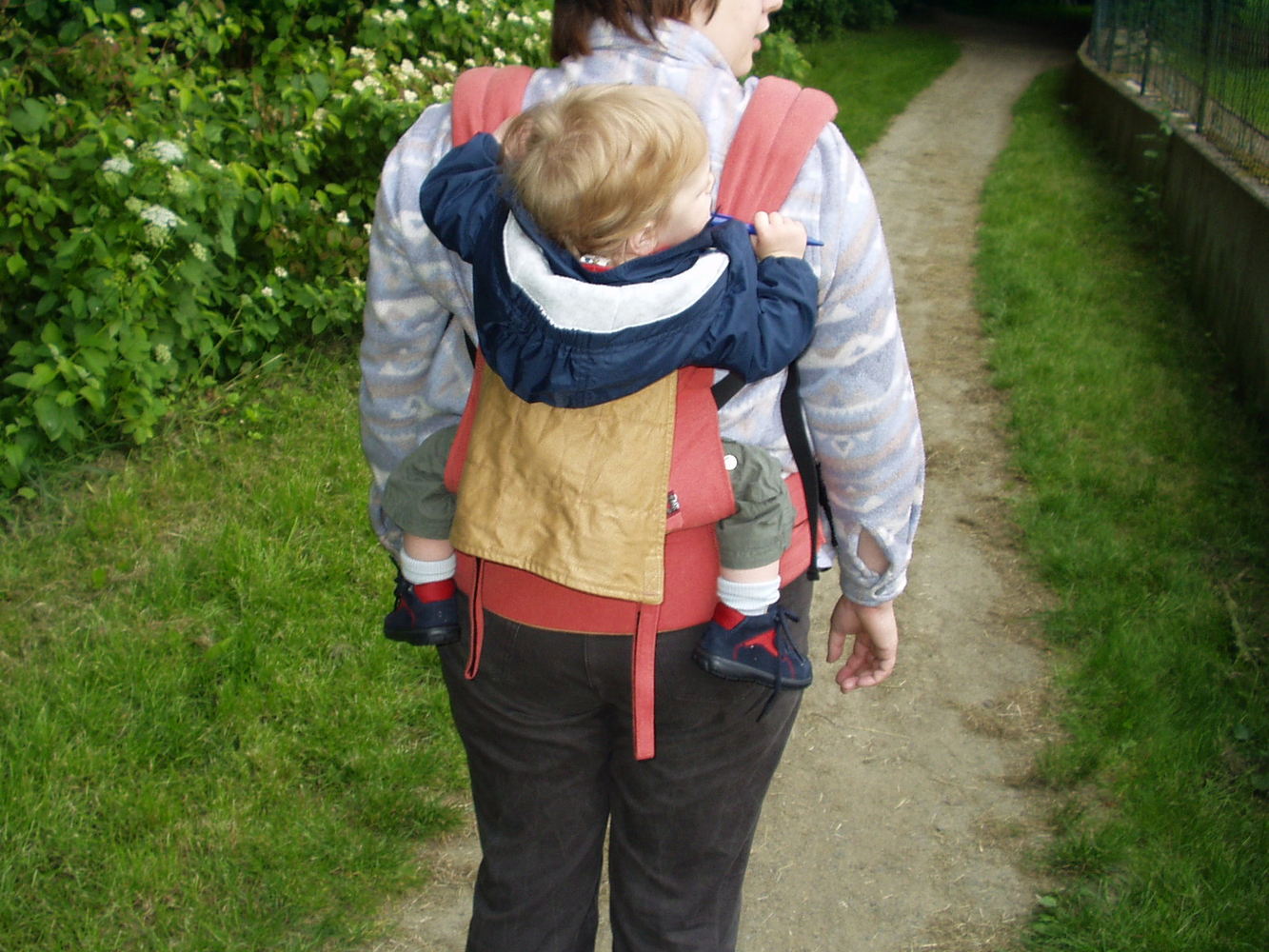 It's already known that across all sorts of different animals, those with smaller bodies use more energy per unit of mass than larger animals. But this doesn't actually give us a full answer as to why little people use up more energy walking around - it's more than just a factor of their different metabolic rates.
It's already known that across all sorts of different animals, those with smaller bodies use more energy per unit of mass than larger animals. But this doesn't actually give us a full answer as to why little people use up more energy walking around - it's more than just a factor of their different metabolic rates.
Weyand's team monitored the energy used up by each volunteer as they walked on a treadmill at different speeds ranging from half to 1.9 meters per second, and discovered that smaller people use the same amount of energy per stride as taller folk - but with littler legs, they have to take more strides to cover the same ground, using up more energy in the process.
So essentially, if you scaled up a 3 foot, 5 year old to be the same size as a 6 foot adult, they would walk exactly the same way revealing that grown ups don't have a different, more economic way of walking they just benefit from having longer legs.
Based on their findings the research team have come up with an equation that calculates the energetic cost of walking, which will have lots of useful applications including for pedometers and treadmills. By inputting not just your weight, as many machines currently do, but also your height, we now have a much more accurate way of working out how many calories you'll burn over a certain distance.
So this is great - because it means next time I'm at the gym on a treadmill running next to an elegant tall athlete, I have a genuine scientific excuse for finding it more hard work, because just like toddlers, us vertically-challenged folk use more energy just getting around.
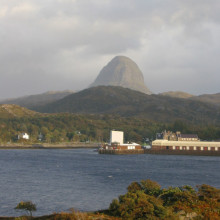
07:54 - Earth's Oxygenation came Earlier than Expected
Earth's Oxygenation came Earlier than Expected
with Professor John Parnell, University of Aberdeen
Previously, we have believed that the Earth's atmosphere turned oxygen-rich about 800 million years ago and this ushered then the era that made complex life like us possible. But now, new research from Scotland shows that we might have got it wrong. And in fact, oxygen levels increased much, much earlier. Speaking to Chris Smith, University of Aberdeen Geologist, Professor John Parnell...
 John - We're examining a key stage in the evolution of life on Earth. The evidence relates to a particular group of microbes which have been very successful and very widespread. Today, they colonise everywhere from freezing glaciers down to hot smokers in the deep ocean. They rely on reducing sulphate, so these are what are known as sulphate-reducing bacteria or sulphate-reducing microbes. But they made an important advance by getting energy in a more efficient way which involved making use of oxygen in the environment. So it's as a marker for increasing oxygen in the atmosphere that they are really important in this context.
John - We're examining a key stage in the evolution of life on Earth. The evidence relates to a particular group of microbes which have been very successful and very widespread. Today, they colonise everywhere from freezing glaciers down to hot smokers in the deep ocean. They rely on reducing sulphate, so these are what are known as sulphate-reducing bacteria or sulphate-reducing microbes. But they made an important advance by getting energy in a more efficient way which involved making use of oxygen in the environment. So it's as a marker for increasing oxygen in the atmosphere that they are really important in this context.
Chris - So we can use them as a proxy measure for when oxygen in the Earth's atmosphere in general increased and then that in turn enabled more complicated things like us to come along.
John - That's right. It's important because as oxygen increased in the atmosphere and started to penetrate into the subsurface, this opened a way to complex life including animals, and for that life to burrow down beneath the surface. So we're looking not just at an evolution of life, but an evolution of habitat as well, and an evolution of behaviour because of course, as life went beneath the surface, it could then escape predators, et cetera.
Chris - Can you put some timing on this for us? When exactly looking back in geological history are we talking about?
John - Well, it had been thought that this evolution to make use of oxygen occurred about 800 million years ago. We now have evidence from our rocks in Scotland that this occurred at least 400 million years before that. So we're substantially putting back the boundary to at least 1.2 billion years old. The oldest evidence that we have comes from near Lochinver in Sutherlandshire on the West Coast of Scotland. That's at 1.2 billion. And then we have continuing evidence from about 1 billion years old in the Gairloch district which is also on the West Coast of Scotland.
Chris - And when you say you've got this evidence, what are you looking for and what are you actually finding?
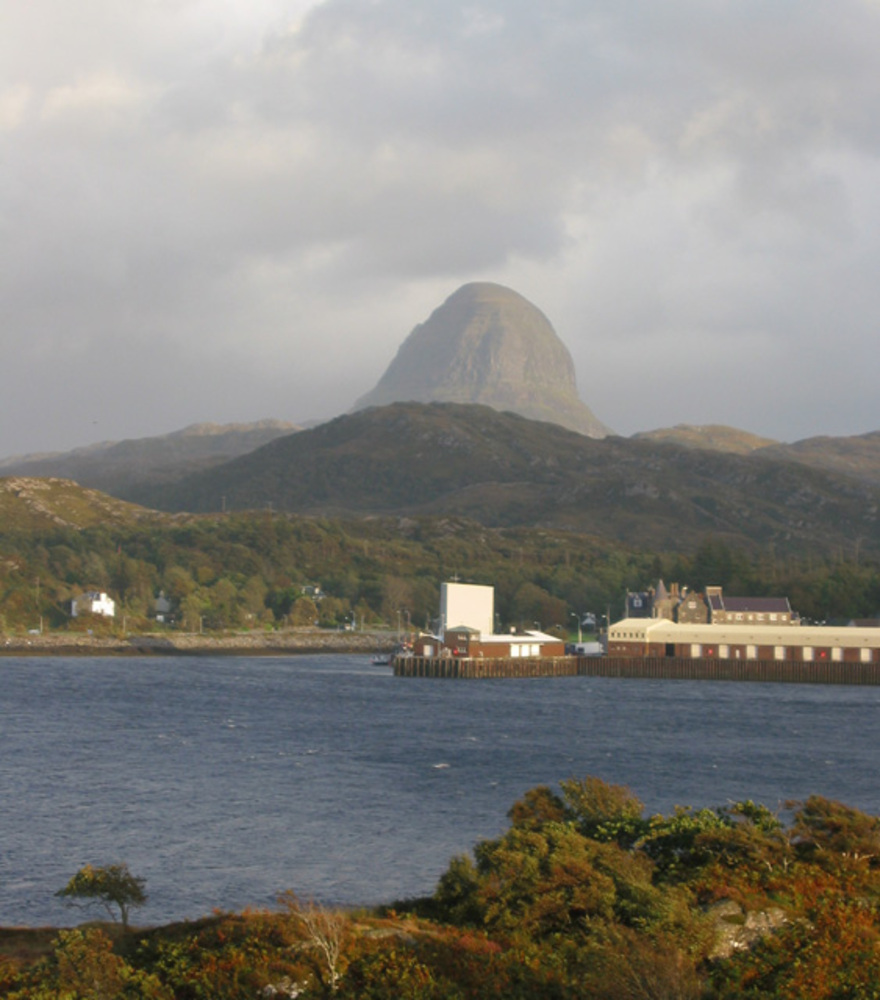 John - The evidence doesn't come from conventional fossils. It comes from what we call chemical fossils that is distinctive chemical signatures that were left behind by the microbes. And in this case, it relates to a detailed analysis of the sulphur that the microbes were using to get energy. That sulphur now occurs in the mineral, iron pyrite and that's what we have sampled and analysed, and we've done that in a couple of different ways. We have done some chemical extractions from the pyrite. We've also used a laser technique on the pyrite and in both cases, we extract the sulphur out and then analyse its isotopic composition. And it's the details of that isotopic data that tells us that the microbes must've been using oxygen and therefore, that enough oxygen was available to them.
John - The evidence doesn't come from conventional fossils. It comes from what we call chemical fossils that is distinctive chemical signatures that were left behind by the microbes. And in this case, it relates to a detailed analysis of the sulphur that the microbes were using to get energy. That sulphur now occurs in the mineral, iron pyrite and that's what we have sampled and analysed, and we've done that in a couple of different ways. We have done some chemical extractions from the pyrite. We've also used a laser technique on the pyrite and in both cases, we extract the sulphur out and then analyse its isotopic composition. And it's the details of that isotopic data that tells us that the microbes must've been using oxygen and therefore, that enough oxygen was available to them.
Chris - So why did you undertake this study because everyone was pretty sure that about 800 million years ago, that's when things suddenly began to change? So why did you then go looking and say, "Well, is that really the date?"
John - Well, I mean, most of the rocks from this age are from the ocean, but we were aware that we had rocks back at 1.2 billion which had been laid down in a large lake. So this is effectively a terrestrial environment and that means that any microbes that might've been inhabiting that environment were much more in tune with what was going on in the atmosphere. So if there was going to be anywhere where we might find this earlier signature, it was going to be in terrestrial rocks like the ones we had. So that was a good reason to go looking there and it happens that these rocks up in Northwest Scotland are particularly well preserved for their age. So, there was a good reason to go searching there.
Chris - And I guess now, what you're going to have to do is to independently confirm or corroborate this perhaps by looking at other rocks from other bits of the world of an equivalent age, and see if you can see the same signature written there.
John - Well in a way, we actually have already corroborated this because we first of all looked at the rocks at 1.2 billion - these were the ones near Lochinver and then we looked at a younger set of rocks. I mean, quite a different set of rocks of 1 billion years old. These were the ones near Gairloch and they showed us the continuation of the same signature. So we've shown that this is not just an isolated event. We actually have a continuing story.
Chris - And what are the implications of it?
John - Well I mean, the implications are that we are pushing back the time at which there was enough oxygen in the atmosphere to support the evolution of complex life. Now it may well be that there were some other event which eventually kicked off the evolution of animals. But what we've shown is, that there was enough oxygen around so that the atmosphere was not a barrier to that evolution.
Ben - Which is a good thing at least where we're concerned. That was Aberdeen University's John Parnell, talking with Chris Smith.

13:31 - Lap Cats Lap Fast
Lap Cats Lap Fast
We've been living alongside cats for thousands of years but it's taken until now to fully understand how they perform one of the most basic of tasks - drinking.
All cats, from the mightiest wild tiger to the laziest fat lapcat, drink with a very subtle action that takes advantage of a balance between gravity and inertia; the tendency for something to keep moving in the same direction unless acted upon by an external force.
 Back in the 1940s, MIT engineer Doc Edgerton filmed a domestic cat lapping at milk. We've known since then that they form a distinctive shape with their tongues, curling the tip of the tongue backwards so the top, or dorsal, side of the tongue is the first to hit the water.
Back in the 1940s, MIT engineer Doc Edgerton filmed a domestic cat lapping at milk. We've known since then that they form a distinctive shape with their tongues, curling the tip of the tongue backwards so the top, or dorsal, side of the tongue is the first to hit the water.
Writing in the journal Science this week another MIT researcher, Roman Stocker, and his colleagues have used high-speed video footage of domestic cats including Stocker's own pet, Cutta Cutta, along with a range of big cats in local zoos. Using data from these observations they were then able to build a robotic version of a cat's tongue to really get to grips with the mechanisms involved.
When the tongue comes into contact with the liquid some of the liquid will adhere to the surface of the tongue. As the tongue is retracted, it pulls a column of liquid along behind it. Here's where the elegant physics comes in to play. The column is pulled up by inertia and simultaneously pulled back down by gravity.
Interestingly, surface tension and viscosity seem to play little or no role, and as the tip of the tongue has none of the distinctive hair-like projections that make cats' tongues so rough, these also play no part in the physics of lapping. Also, it seems that cats drink in a very different way to dogs, who merely use their tongues to scoop up liquid.
As well as helping us to understand how cats maintain their refined image, even when lapping rainwater from puddles, understanding these mechanisms will inform biomechanical models and help us to design better "soft robots".
Is the Cambrian period named after Cambridge?
Ben - Very good question, I must admit I did have to look it up. But no, it's actually named after the Latin name for Wales which is Cambria and that's because there are Welsh mountains where we see some of the best examples of these rocks.
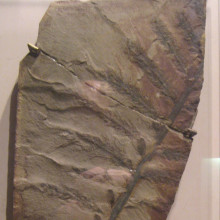
16:49 - Planet Earth Online - Fossil Forests
Planet Earth Online - Fossil Forests
with Sue Nelson and Dr. Christopher Berry, Cardiff University
Helen - When American scientists discovered some tree fossils in 2007, they turned out to be 385 million years old. That makes them among the world's oldest trees. But in order to identify these trees, they needed the help of fossil tree expert, Dr. Christopher Berry from Cardiff University. Well, Christopher travels the world - a very great job - searching for ancient tree and plant fossils, and analyses them back in his lab. Planet Earth podcast presenter, Sue Nelson joined him at the University's School of Earth and Ocean Sciences to see some of these fossils for herself.
Chris B. - So this is a palaeontology laboratory...
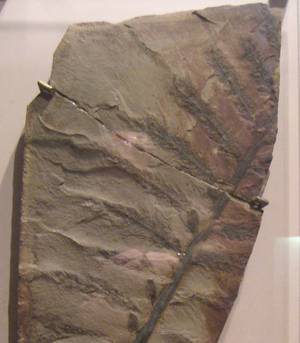 Sue - Lovely squeaky door and is that a - I hope that's not a priceless fossil you're using as a doorstop there!
Sue - Lovely squeaky door and is that a - I hope that's not a priceless fossil you're using as a doorstop there!
Chris B. - That used to be a priceless fossil from Venezuela, but now, I've chopped the fossil off it, so it's just a block of rock.
Sue - Well let's see some of the blocks of rock that you've got here in your laboratory.
Chris B. - On the bench, we have some slabs of dark gray mudstone and on these slabs, we have some impressions and compressions of fossil trees. The compressions are the branches of these fossil trees.
Sue - It's not that easy to see though. I mean, you're saying that and I can see where the central one is, but it's harder to actually distinguish the bits you're looking for... Ah, now you've just picked up a jar of liquid here.
Chris B. - Yes. This is alcohol and one of the ways we can see these fossils better is just by simply pouring some of the liquid onto the fossil.
Sue - Oh, Yes...
Chris B. - And then you can see that the contrast between the fossil itself made out of carbon and the dark grey rock becomes enhanced.
Sue - You can actually see what looks like a very feathery frond branch, about the length of my finger. What plant was this and when was this plant on the Earth?
Chris B. - The name of the plant is Archaeopteris. It's technically called a progymnosperm but this simply means it's related to the living conifers and it was alive at the boundary between the middle and upper Devonian, and that means 485 million years ago.
Sue - So what can you learn from a large fossil like this?
Chris B. - What I'm particularly interested in is the morphology of the plant. That's to say its shape, its form and its size and these fossils are particularly important because they tell us a bit about the size of a tree. If we're interested in the impact of trees on the environment, the amount of carbon in a plant is probably one of the most important things, as well as the size of its rooting system.
Sue - Well let's move across your laboratory now to another bench table. We're next to a microscope. You've got a sequence of rocks that you've laid out for me. Each one imprinted with rather beautiful stems, branches of ancient plants.
Chris B. - Yes, these are more of the same type of plant. They're slightly younger. It is very similar in shape to a fern frond, but it's actually a branch of one of these early trees, and because it's a branch, it's much more woody. It would be much more stiff and not as floppy as a fern frond. But the structure is the same. You have a long central axis, little branches coming off the side and on each of that, forming a large sort of flattened structure. Then attached to those little branches are little leaves.
Sue - Moving along then, how does this differ because the rocks towards the right hand side are quite different in terms of their fossils because those look as though they have roundish or heart shaped leaves?
Chris B. - That's right. As we come up through time, the leaves of these plants become less wedge shaped and more full. They've got a margin which goes right around the outside with no incisions in it and the things become more flattened, if you like, more webbed and more photosynthetically efficient.
Sue - What importance is it in terms of the Earth today, knowing how our ancient forests were?
Chris B. - We know today that there's a tremendous difference between environments in which there are natural forests and environments today where those forests have been stripped away, and you're left with bare earth. Think of a rainforest. If you strip down the rainforest, then the soil that the trees have been growing in is very quickly washed away. There are very important things going on in the soils beneath the plants caused by the roots, the fungi and the roots, and the interaction of these roots with the minerals in which they're growing. These are very important processes. They not only control what the soil is like, but in fact, they actually draw down gases from the atmosphere, particularly carbon dioxide and take that carbon dioxide out of the atmosphere, and transport it away, so it's deposited as solid minerals within the sea. And this is an incredibly important process. We all know about the problems of carbon dioxide in the atmosphere today. This is one of the ways in which carbon dioxide is removed from the atmosphere in the past.
Helen - Fossil tree expert, Christopher Berry, explaining the importance of ancient trees to Planet Earth podcast presenter, Sue Nelson.
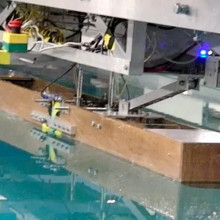
22:04 - Naked Engineering - Modelling Damaged Ships
Naked Engineering - Modelling Damaged Ships
with Daniel Fone, University College London
Meera - This week on Naked Engineering, Dave and I are sticking with the theme of shipping, but we're going to look into a few of the basics and see just how ships actually float and what forces are acting on them when they're out at sea. Now Dave firstly, how does a ship float?
Dave - Well water is quite heavy stuff. It weighs about a kilogram for every litre or ton of every cubic metre. This means that the deeper you go, the higher the pressure is. So, the water pressure at the bottom of the ship is going to be a lot higher than the top, which means that overall there's a net force pushing it up and you get this upthrust force which holds up the boat.
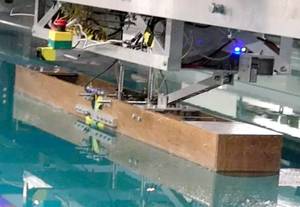
Meera - What actually happens then to a boat or a ship out at sea? What sort of forces act on it and how is this overcome to keep it afloat?
Dave - Well there are two major forces. There's the upthrust and gravity. Gravity pulls it down and some bits of the ship are heavier than others so they're going to have more gravity associated with them. And other places are going to have more upthrust than weight so they're like being lifted up. The actual structural design of the ship is all about transferring the forces from the upthrust to where all the weight is, to hold everything up and keep it nice and stable. Even actually with the ship just lying in the sea in perfect calm waters, there are quite big stresses in it, you've got heavy engines in one place, and also the bow and stern at the end of the ship sink downwards which is called hogging.
Meera - These forces are obviously important to understand, but especially on a damaged ship to see just what might happen if a ship were damaged out at sea. So to find out a bit more about this, we've come along to the fluids laboratory at University College London to meet Daniel Fone, who looks into just this.
Daniel - I'm looking into damaged ships and more specifically, damaged ships in waves. The majority of the research that's been done is on a ship in still water.
Dave - And I guess waves put a very large stress on the ship and if you have a damaged ship, the time you're really, really worried is if you were in the middle of the big storm.
Daniel - Precisely and when a ship is damaged, it's got less structure to withstand that stress.
Meera - Well we've come along to your lab to see where you actually conduct your research. There's a gigantic water tank in front of us. It's 20 meters long, 2 ½ meters wide. It's filled with water, about a meter deep, with a model of a ship just floating along in the middle.
Daniel - This tank has two capabilities. Firstly, it has a wave maker at one end which can generate really accurate deepwater waves and the second is there's a towing rail which expands the length of the tank. We can attach models to it.

Meera - And so, in the middle of this tank you have a 2-meter model of a ship, but it's kind of pieced together. What's going on here? What are you actually looking into on this ship?
Daniel - So we call this experiment, the hinged ship experiment. We've taken our 2-metre long model, cut it completely in half, and then hinged the 2 halves back together. We've also positioned load cells which are little devices that can measure a force experienced as a result of waves passing the model. The most critical model of a ship, even when it's not damaged is when it bends longitudinally. So as Dave has previously mentioned, a ship tends to bend along its length so the front and back, or bow and stern, dip into the water if there's less buoyancy or they can come out of the water more than the middle, and so you get a bending effect on the ship. And this is what our experiment is principally set up to capture and we want to know the effect of damage; its location, the size of the hole, on that force.
Meera - So what kind of damage are you actually inducing then?
Daniel - Well this model is made out of PVC and plywood, and the good thing about that is we can easily drill holes in the bottom of it, and then patch them up so we can move the damage around as and when we please, almost. The way that this experiment is set up, we're looking at symmetrical damage, symmetrical about the centre line of the model which is a good simplistic representation of a ship being grounded. If you think about the number of variables there are to consider when a shipor boat gets damaged: the size of the damage, the shape of the hole, the roughness of the hole, where it is along the length of the ship, whether it's at the kind of waterline on one side or whether it's along the bottom; and the compartment that it's damaging, is it full of equipment and machinery, or is it an empty cargo tank? All of these things have quite a significant impact on the forces that are going to result from the damage.
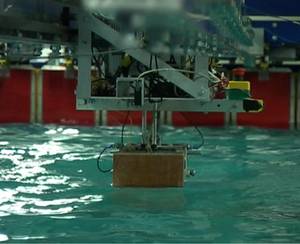
Meera - So we have got this giant water tank in front of us. Could we see this in action?
Daniel - Of course. So I'm going to make a variety of different wavelengths and we have a screen here which will give us readings for the forces in the middle of the ship and also, the motion of the front and end. We've instructed the wave maker in this case to generate what's known as regular waves, so sinusoidal in nature.
Dave - So you've got a nice string of waves with a wavelength of about a metre.
Meera - And now, looking at the screen, showing all the forces acting on the ship then, what's happening to the model of the ship?
Daniel - So the model is being excited by these passing waves and we have sensors positioned to measure displacement at the front and the back. We also have our load cells that we previously talked about, giving out readings of a force, and we have a series of wave probes which measure the displacement of the water, wherever they're mounted. So the model here is exhibiting bending, as can be seen by the screen. It's also obviously moving up and down as the waves go past and the water inside is moving up and down, relative to the model as well.
Dave - I've been having a look at the screen and it seems to be using quite arbitrary units of force, but at the moment, the force seems about 0.3 units peak to peak.
Meera - Okay and Dan, you're now changing the wavelength and making it slightly longer.
Daniel - So I've now reduced the frequency of the wave. Meaning that the wavelength will be longer and we're going to see what happens when the wavelength is exactly the same as the ship length.
Meera - The forces have all seemed to change on the actual graphical screen...
Daniel - Well the waves that we have passing the model now are where their length is equal to the length of the model. And this, in kind of classical ship theory, is known to be the worst case of bending on a ship. These waves, if you were to freeze them as they were passing the model, you would find that, because they're of the same length as the ship, you'd have a peak at either end, and a trough in the middle.
Meera - Which means there's no support in the middle.
Daniel - Exactly. There's no buoyancy in the middle, but there's a maximum buoyancy at either end so the model will bend.
Meera - Okay so, we've seen that there are clear differences when there are different wavelengths in different kind of factors affecting a ship. What have you managed to find to-date, Daniel?
Daniel -Well a lot of software at the moment that model ships that are damaged, generally don't take account to the fact that there's a hole in the ship. They fill a tank full of water, but don't have any hole in it. We simulated the same scenario with our model and we also then compared it with the case where there's a hole in the same compartment, and we found that the behaviour of the fluid inside the model was incredibly different. The case without a hole results in very violent flood water motion, whereas the same scenario with a hole in it, there's a very well-behaved flood water motion. The fact that there's actually a hole there has a kind of damping effect.
Meera - How can all of these be used to actually help captains when they're out at sea with a damaged ship?
Daniel - Well ourselves and the University of Southampton are developing a series of computer tools that can model a ship that's damaged in waves. And these experiments are principally being carried out to validate any results that their and our software are producing. And this software we hope in the future will be able to assist captains out at sea when they get into an emergency response scenario when they report what kind of damage has occurred. We're hoping our software will be able to tell the captain whether he should stay put, given the weather forecast, whether he can make it back under his own steam to a safe haven, whether he needs to be towed, whether to completely jump ship, get out of there because it's going to break in half.
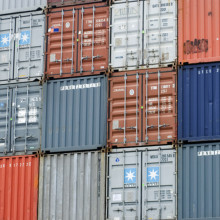
30:19 - Sustainable Shipping
Sustainable Shipping
with Dr Tristan Smith, University College London
Helen - How can we make shipping more sustainable? Tristan Smith from University College London is here to shed some light on how. Hi Tristan...
Tristan - Hi, there.
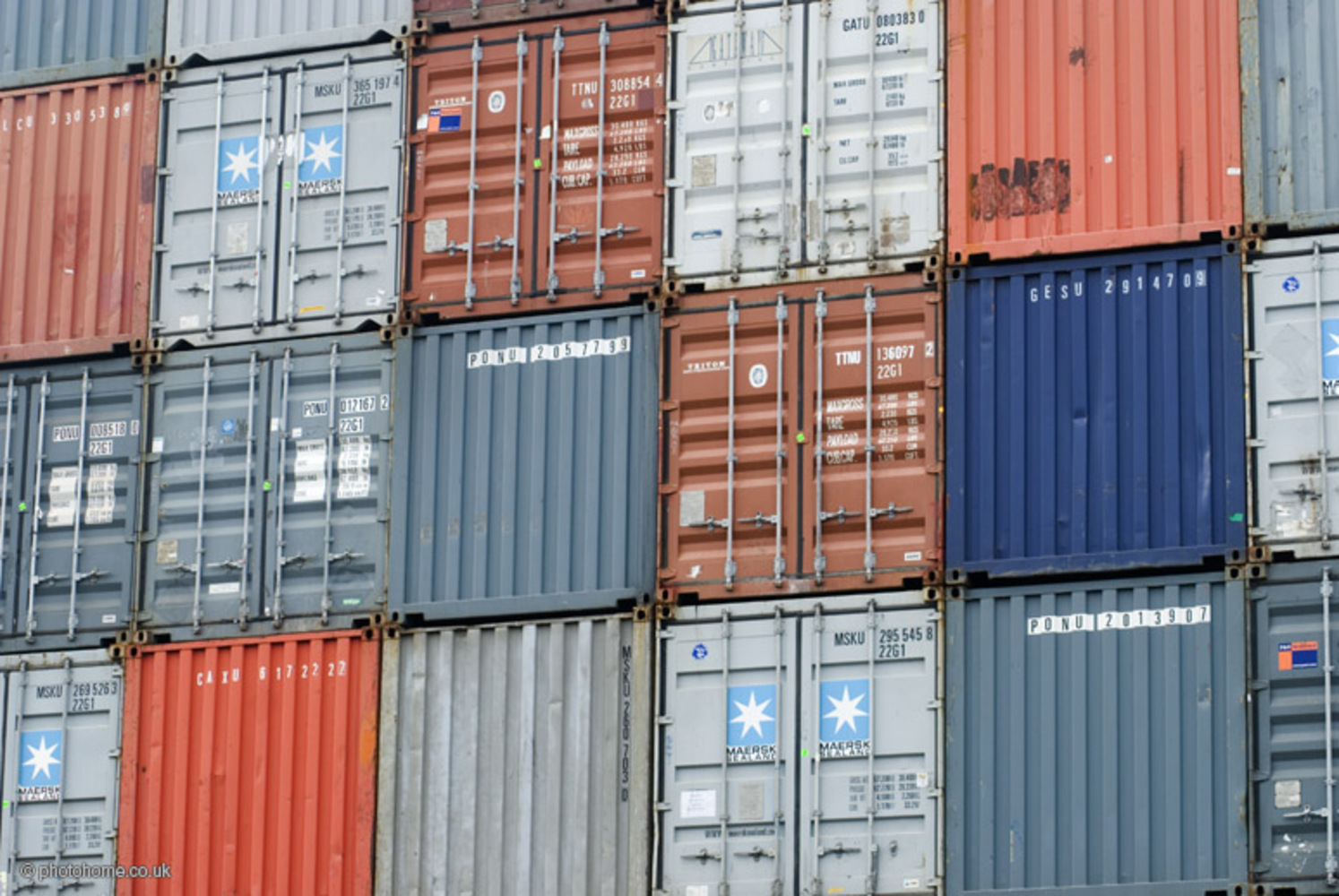 Helen - Thanks for joining us. We generally think about air freight as being the eco-villain when it comes to transporting things including people around the world, but shipping actually isn't environmentally innocent, is it? How do those emissions from planes and ships actually compare?
Helen - Thanks for joining us. We generally think about air freight as being the eco-villain when it comes to transporting things including people around the world, but shipping actually isn't environmentally innocent, is it? How do those emissions from planes and ships actually compare?
Tristan - If we look at the global level, then shipping has got a very similar magnitude global emissions of carbon dioxide to the aviation sector. Overall, it's about the same. The difference is that the amount of stuff that we move by ship is many, many times greater. So, ships are by themselves quite efficient carriers of cargo, but there are a lot of them in the world and so, they're still a significant issue in the carbon discussions that are going on.
Helen - That's the carbon discussion specifically, so we're talking about climate change but it's not just carbon that we should be really be thinking about when it comes to shipping transport, is it? We've also got other nasties coming out of shipping fuel as well including sulphur is a big problem.
Tristan - That's quite right. Historically, ships haven't had the most highly regulated ways of being operated and so, we're still burning fuels in ships which were outlawed on land many, many years ago. And at the moment, that means that we're still burning very high sulphur fuels, the ones with percentages of sulphur in their emission of about 3 ½ or 4% in some cases and that means that their significant health issues associated with that.
Helen - So there are health issues associated with sulphur. Am I right that actually, it counteracts climate change to some extent when the sulphur in the atmosphere helps reflect heat back into space?
Tristan - Well, I'm not a climate scientist expert.
Helen - That's okay.
Tristan - But I have heard that this is true, that there's a radiative forcing effect associated with sulphur emission which means that you actually get a cooling, but that is a very short term effect, so the sulphur is quickly broken down in the atmosphere, and we can't really think of it as being the same effect as the one associated with the carbon emission which obviously hangs around in the air for a lot longer.
Helen - Okay so, we've got this sort of slightly dirty fuels being used in the shipping industry and that overall, we've got the same amount of carbon coming out as we do from airplanes, but which are moving a lot more stuff around the world. And in terms of trying to make shipping more sustainable, where are you targeting your efforts? Are you looking at fuel or is it also about the boat designs as well themselves?
Tristan - I think it's got to be a consideration of everything. It's actually quite an expensive sector to decarbonise because as many people are aware, we've been building ships and moving stuff in them for a very long time, and got very efficient and good at it. But that doesn't mean that there isn't more that can be done. So, certainly, technologies that go on the ship itself, whether that's an engine modification or a means of assisting its propulsion in some way, such is a review of technology. And then the fuels are something that you can do something about as well and that you can move perhaps to liquid natural gas fuel which is being taught about at the moment, or even buy fuels or hydrogen at some point in the future perhaps.
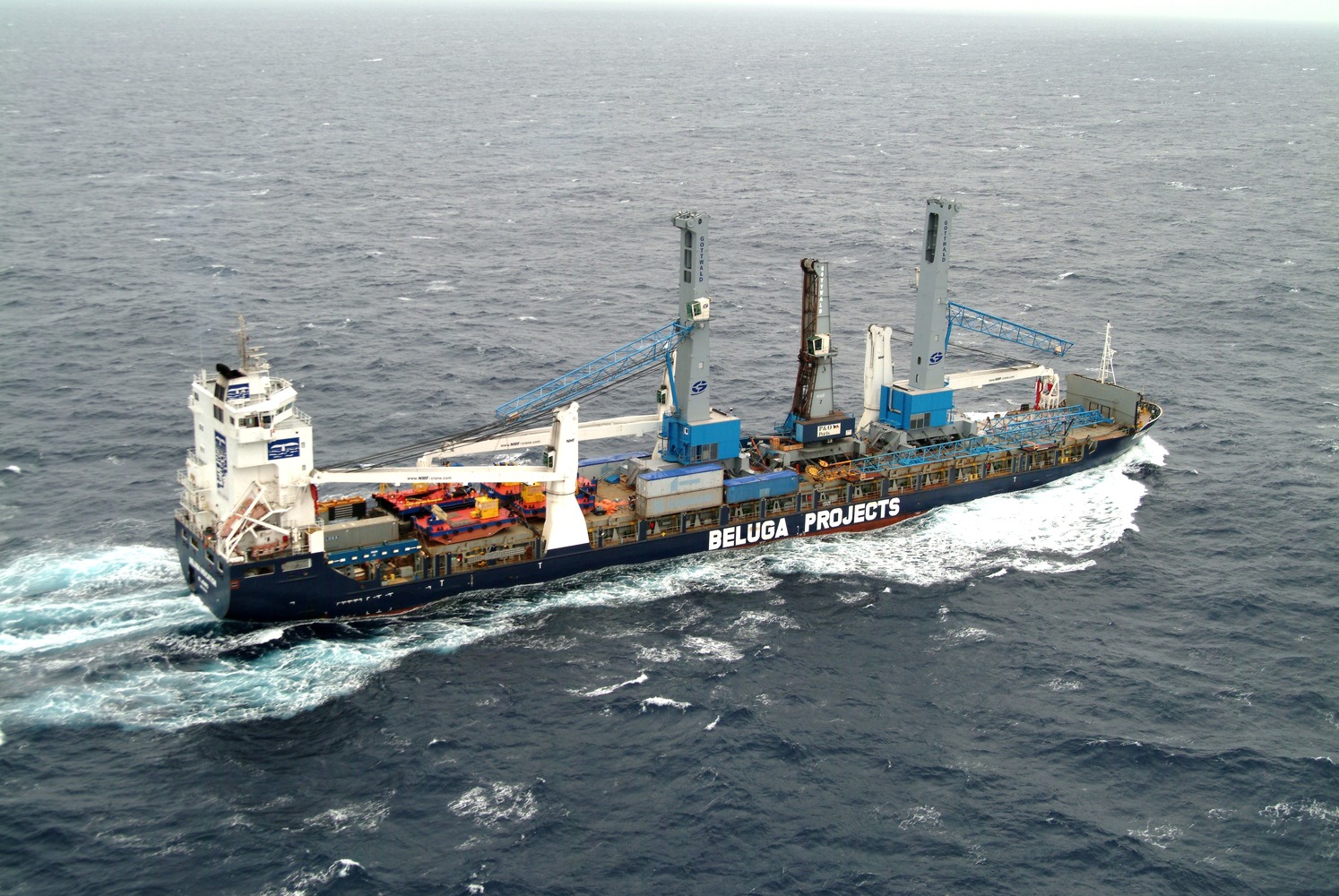 Helen - And there is to some extent, the fact that shipping fuels are sort of under the radar a bit and we're not really thinking about them. We've actually had a question coming from Dali Waverider who says that in my understanding, is that basically, marine fuel is asphalt, the drags of the oil refinery process, but the real problem is that, this all happens out at sea and there's no one really to complain about it, and wants to know if there are any moves underway to burn, cleaner fuels at sea. So why is it that we aren't really regulating what's going on in terms of shipping emissions and fuels being used?
Helen - And there is to some extent, the fact that shipping fuels are sort of under the radar a bit and we're not really thinking about them. We've actually had a question coming from Dali Waverider who says that in my understanding, is that basically, marine fuel is asphalt, the drags of the oil refinery process, but the real problem is that, this all happens out at sea and there's no one really to complain about it, and wants to know if there are any moves underway to burn, cleaner fuels at sea. So why is it that we aren't really regulating what's going on in terms of shipping emissions and fuels being used?
Tristan - Well, I think it's partly that. It's out at sea, it's out of sight, it's out of mind, and so quite often, doesn't get the clamour of public opinion that might drive changes in other industries. It's also a very international industry and so, the regulation is very hard to bring in because you might change something in Europe, but in practice, everyone might fill their ships up in a different continent. So it's very hard to bring something in that's going to be universally effective. But there is currently a regulation due to come in force in 2020, which will mean that we can no longer burn sort of heavy fuel oils which is the generic term for the high sulphur fuels that are currently being burned on ships.
Helen - And there are some other environmental impacts of shipping as well, aren't there? I mean, one thing I suppose to consider is the issues of ballast water and carrying various species around the oceans that aren't supposed to be there. That presumably is something else that needs to be thought about.
Tristan - That's one of those unintended consequences that just all of a sudden, someone points out and you think, "Well, why didn't we think of that before?" Unfortunately, when a ship has discharged its cargo, it needs to take a water in order to make sure that when it goes back out to sea, it will be stable enough not to capsize. That water is pumped into the ship when it is in its port at which it's just offloaded its goods. And then as it moves across the oceans and comes to another part of the world, it will then pump out the water and that's been a very neat way of moving one species from one part of the world to another that probably wouldn't have got there under its own steam.
Helen - Absolutely. That's something that needs to be considered, but if we head back to the boats again, we've been using boats like you said for probably as long as we've been moving ourselves around the world. But can we radically redesign the way boats are made and the way we do travel across the oceans? Is there some way that we can sort of rethink the whole thing to make it even more sustainable today?
Tristan - Absolutely and I think there's a myriad of brilliant ideas out there that could all be fantastic solutions in the future to help tackle climate change and to make shipping a much more environmentally friendly means of moving goods, and make it the most environmentally and more competitive than the alternative modes. But they all need to be thought through in terms of the detailed design, but also their economics because everything comes at a price, and some things are going to be cheaper than others.
Helen - And just to throw an enormous question out at you, what would you think the ideal situation would be if we were looking forward into the future of global container shipping and moving things around the world? What would be the best thing that we can look forward to, do you think?
Tristan - Well, I'm quite a big fan of wind power as a means of supporting some onboard fuel that could be used to take up and keep the ship on schedule if the wind suddenly dies. So for example, a hydrogen powered fuel cell or a biofuel-powered, very efficient diesel engine could be a means of providing a combination of technologies that could deliver that very efficient low carbon ship in the future.
Helen - So we could be looking at almost a sort of hybrid between a sailing ship and a cutting edge, 21st century battery powered ship to get us around the oceans maybe?
Tristan - I think it's a combination. There's nothing that's going to beat the fantastic economic efficiency of a fuel like oil and a diesel engine, but it's going to be a combination of things that comes in to do something similar.
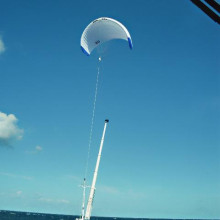
38:07 - Hoisting the SkySails
Hoisting the SkySails
with Stephan Brabeck, Technical Director, SkySails
Ben - We are talking about sustainable shipping today and one idea put forward has been to find ways to harness the power of the wind in its rather traditional role of filling some sails. I spoke to Stephan Brabeck from the German company, SkySails.
Stephen - We started to develop SkySails because we could see that the oil price will rise and also nature has to be saved more and more. And we thought about ways to find a solution to prepare ships with alternatives than just the propulsion or the main propulsion depending on fuel. So there, the idea came up. We looked at kite-surfers, how much power they generate with their small kite-surf kites and we asked how to transform this technology to big ships.
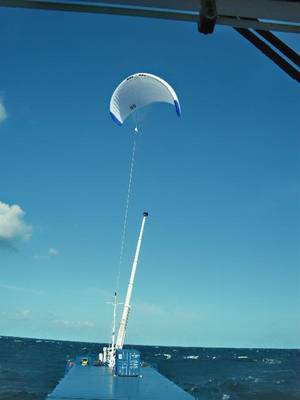 Ben - Because of course, wind power is one of the oldest ways that we've powered ships in the entirety of human history...
Ben - Because of course, wind power is one of the oldest ways that we've powered ships in the entirety of human history...
Stephen - Yes, but the former sailing ships came out of attention because fuel was so cheap on one side and on the other side, nowadays, the ship has to be clear - we have to have a clear deck to load and unload-so you cannot afford a masts to hold the sails. And so, we came to the idea to have a system which you can store away during unloading and loading of a ship.
Ben - How have you developed that idea to build a SkySail? What physically is the SkySail?
Stephen - The SkySail is a parafoil which is attached by a rope to a ship. We use a parafoil instead of a kite. It's filled with air and so, we fly it in profile through the air and the profile has much more lift than a single sheet of cloth, that was the idea; to use this parafoil to generate high thrust which is able to tow a ship at the minimum, 50 to 60% of the main propulsion.
Ben - So this parafoil design, it's essentially a series of chambers in the cloth, rather than just a sheet of cloth, and that gives you much better performance?
Stephen - Yes, that's correct. The cloth itself of the parafoil is like sail cloth, a little bit reinforced against UV-radiation and also, at the line attachment points where we have to transmit this high load to the rope and to the ship.
Ben - So you obviously have to reinforce it if you're putting that much force to it. The rope itself, can you just use traditional sailing rope or does that also have to be reinforced?
Stephen - The rope itself is a very modern material. It has about 10% of the weight of a steel rope of the same strength, and on the other side, it is very durable; made from Dyneema, that's a very new fibre and very strong fibre. The real challenge was to include, to introduce into the rope, a cable; because you can imagine that we have to steer this kite and for the steering purposes, we have a small control pod between the kite and the rope. There are some computers in there and also, an electric motor to control the kite. This motor needs energy and so we have to include into the rope a cable, and that was also a special development.
Ben - And what altitude do they actually fly at? Presumably higher than a conventional sail would be able to?
Stephen - Yes. We fly the system between a height of between 100 and 300 metres. In this height, we have about 25 to 30% more wind than close to the surface of the water. Due to the circumstance that we have left the boundary layer of the Earth's surface at about 100 metres, then we have the full wind, so we have about 25 to 30% more wind force there.
Ben - What conditions can you fly it in? Does it need to be perfect weather? Does the wind have to be going in exactly the right direction or are there tricks that you can employ to use them in not so great weather or when the winds going on a bit of a tangent?
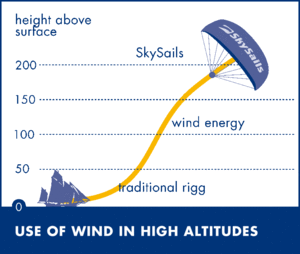 Stephen - We use about 180-degrees of the wind, like a sailing boat, so we can also even go a little bit against the wind and keep the system flying, but the most profitable course is from 90-degree to 270-degree downwind and reaching wind. If we have stronger winds, either we don't start or we can also leave the system in the heavens in static condition, so the captain has not to care about to this system just flying, but without making figures to generate power.
Stephen - We use about 180-degrees of the wind, like a sailing boat, so we can also even go a little bit against the wind and keep the system flying, but the most profitable course is from 90-degree to 270-degree downwind and reaching wind. If we have stronger winds, either we don't start or we can also leave the system in the heavens in static condition, so the captain has not to care about to this system just flying, but without making figures to generate power.
Ben - You don't just deploy the kite and allow that to pull it along. You actually have to make these weaving patterns to get more power out. How does that work?
Stephen - The kite is moving with a velocity of about 50 miles per hour to 150 miles per hour and the kite will be manoeuvred in kind of a figure 8 in front of a ship. The lift of a parafoil is growing by square with the velocity of the wind. That is the reason why we can generate with such a small surface, such a high thrust. There are sailing vessels of about 100-metre length with cloths of 3,000 square metre. We can generate the same thrust with about 160 to 200 square metre.
Ben - What sort of difference does that actually make to fuel usage?
Stephen - On a small ship, about 4,000 tonnes, about 90-metre long, then we can save about 1 to 1 ½ tonne per day at sea with this system on average. So we have not every day the condition to use the system, but if we use the system then the savings are very high: Up to 50 or 60%. Such a ship consumes about 6 tons of fuel per day. If we are working, we save about 3 tonnes per day, but in average over the year, it's 1 to 1 ½ tonnes per day, so over the year, 300 tonnes and that means EUR90,000 to EUR120,000 savings per year for the customer, for the owner. And on the other side, for the ecological side, we save between 600 and 900 tonnes of carbon per year.
Are there health risks associated with eating fish?
Helen: - Well, there is talk about various nasties that you might get in predatory fish like tuna from the open ocean - they will end up potentially having quite a high level of things like mercury in their flesh which is one reason why you're not recommended to eat it perhaps more than once a week. But there's various different levels on that. So there are things that end up in tuna, farmed salmon as well might have some various aspects of the way it was reared that's going to end up in it when you eat it, but actually, I think some of the more interesting things about what's bad about eating fish are things like pufferfish. They're great. You have to prepare those absolutely right. Otherwise a toxin in some of their organs called tetrodon toxin will actually knock you off and kill you.
The interesting thing is that people have worked out a way of farming these fish without any of this toxin anymore. So they're perfectly safe, but nobody wants to buy them. There is no market for safe puffer fish because it's all about the risk and the tingling of the lips when you just got a little bit of toxin, just to make you know that you're a macho fish eater, and that you're taking your life in your own hands, and trusting the chef, because it's all down to a very skillful removal of those innards that are otherwise deadly.
Are there any other means of propulsion other than a propeller?
We put this question to Tristan Smith from UCL...
There are some other types of propulsor than propellers and ducted propulsors are one of them, which I think the second question is referring to. But if we just start with a few of the other propulsors first, we've got water jets which are used on very fast ships and they're a bit like a pump that pumps water in from the sea, and then it expels at a high speed out of the back of a ship. You often see them on the back of catamarans that you might take across the channel to go to France. Those are good if you're travelling very fast. Another one that's worth mentioning is some flapping paddles. So people have actually experimented over the years and to try and recreate the motion of a whale's tail in order to propel a ship along the sea. In fact, this might be any more efficient than the propeller that you typically have on the back of a ship. At the moment, noone's come up with something which is as robust or as efficient as the propeller or reliably efficient as the existing propeller.
When will we get robotic cargo ships with no crew on them?
We put this question to Tristan Smith from UCL...
I think this would be a good thing as long as you weren't a ship's captain or a crew member! I think there's a lot of electronics that could be done and the technology is probably feasible, but the legal implications of having unmanned ships sailing around the world are probably a bit tricky to sort out - if you have an accident who's going to try and remedy the situation or salvage anything? How do you avoid the collision in the first place? Can you actually make sure that the ship's computers are going to be reliable enough in order to stop that? So, there are lots of detailed practical issues, but certainly, the technology could be there and it's something that there are researchers who are working quite hard to achieve at the moment.
If we didn’t burn this thick sulphurous diesel in the marine engines that we’ve got, what could we actually do with it?
We put this question to Tristan Smith from UCL...
I think that's a really good question. I mean, we could build more roads I suppose, but that doesn't really sound like a very good thing to do so. What the refinery would actually do with this by-product of the refining process of the heavy crude is not particular clear and I think it's something that they would probably have concerns about too. Who's going to actually take the stuff off their hands if the ships aren't consuming it themselves. The ships are basically the last industry that's still using it as a fuel and there are no sort of major takers left in the world at the moment.
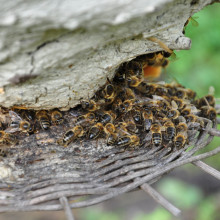
51:16 - How many bees to boil a human?
How many bees to boil a human?
We posed this question to Jürgen Tautz, Julius-Maximilians-Universität Würzburg...
Jürgen - So heat from a honeybee is produced by its strongest machine which is the wing muscles used for flight activity usually. So the bees can mechanically decouple their wings and let their flight muscles run full power and this way, a lot of heat is being produced which gets to about 65 millijoule if one takes their energy. The energy for producing this heat is taken from the honey. So the honey which the bees are producing from the nectar, they collect from flowers, this is the stored energy they have to eat first and then transform it into heat.
Diana - And how many bees would have to feast on honey before decoupling their wings?
Jürgen - The calculation can go like this: If you assume that a human consists of about 50 litres of pure water, which is close to realistic; and that a human dies at 42 centigrade, which means a human has to be heated up from 36 to 42 centigrade. We need - to heat up 1 gram of water, so one millilitre of water, for 1 degree Celsius - we need 35 joules which means to heat up a human by 6 centigrade, we need 1.5 million joule. If on the other hand, we take the heat which can be produced by a honeybee which is 65 millijoule, it's very easy now to calculate how many bees we need to heat a human to this extent, which is roughly about 20 million honeybees, which comes close to about 1,000 midsize bee colonies. So not much, space on the surface of a human, to give access to all these bees.
Diana - That's right. It's 20 million bees or 1,000 colonies to essentially cook a human. And to heat a person up to 100 degrees, roughly the boiling point of water, you'd need about 250 million bees. That's 4000 colonies, or about a 6th of all the hives currently registered in the UK. But you'd only need to feed them 160 million joules worth of honey, which you'd find in about 50 jars of the stuff, and that honey would cost you about 150 quid, which isn't so bad!
- Previous How Fast do Lap Cats Lap?
- Next Modelling Damaged Ships









Comments
Add a comment